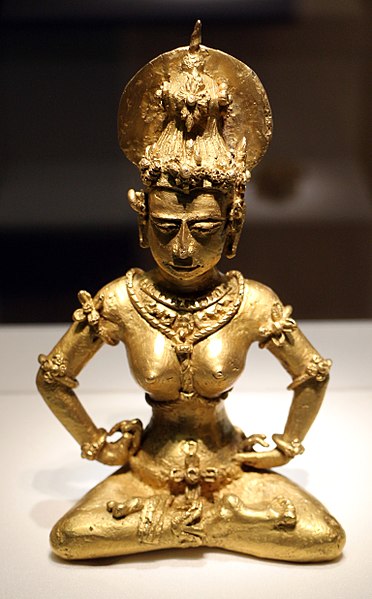Indigenous Philippine folk religions
Indigenous Philippine folk religions are the distinct native religions of various ethnic groups in the Philippines, where most follow belief systems in line with animism. Generally, these Indigenous folk religions are referred to as Anito or Anitism or the more modern and less ethnocentric Dayawism, where a set of local worship traditions are devoted to the anito or diwata, terms which translate to gods, spirits, and ancestors. 0.23% of the population of the Philippines are affiliated with the Indigenous Philippine folk religions according to the 2020 national census, an increase from the previous 0.19% from the 2010 census.
Mount Pulag is one of the many sacred grounds of adherents of the Indigenous Philippine folk religions. Ancestral spirits who guide their descendants are believed to reside throughout the mountain.
The Agusan image statue (900–950 CE) discovered in 1917 on the banks of the Wawa River near Esperanza, Agusan del Sur, Mindanao in the Philippines. Although having Hindu and Buddhist elements, locals worship it instead as a vessel for the animist gods. It is currently under the colonial possession of the American Field Museum, despite countless requests by locals to return the Image back home.
15th century Ifugao bulul with a pamahan (ceremonial bowl). Adherents of the folk religions believe that gods presiding over crops reside within their bululs. The sacred bulul in the photo is currently under the colonial possession of France's Louvre Museum.
One of the many Limestone tombs of Kamhantik (890–1030 AD), where ancestors were buried and sealed by sarcophagi. Locals believe that the tombs were also created by forest deities, as per tradition. In the early 20th century, the sacred site was looted and defiled by American colonizers. All of the sarcophagi seals were stolen in the process.
Animism is the belief that objects, places, and creatures all possess a distinct spiritual essence. Animism perceives all things—animals, plants, rocks, rivers, weather systems, human handiwork, and in some cases words—as being animated, having agency and free will. Animism is used in anthropology of religion as a term for the belief system of many Indigenous peoples in contrast to the relatively more recent development of organized religions. Animism is a metaphysical belief which focuses on the supernatural universe : specifically, on the concept of the immaterial soul.
Edward Tylor developed animism as an anthropological theory.
Five Ojibwe chiefs in the 19th century. It was anthropological studies of Ojibwe religion that resulted in the development of the "new animism".
Animist altar, Bozo village, Mopti, Bandiagara, Mali, in 1972
Ingrown sculpture of human head in a tree trunk in Laos.








